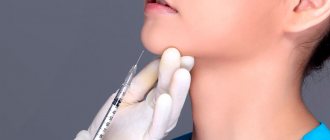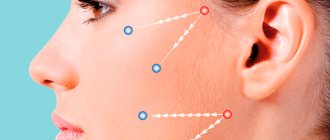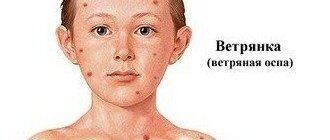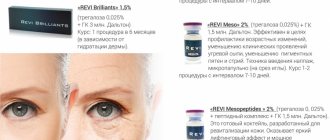Intradermal fillers based on hyaluronic acid (Shiseido, Japan) are produced using a multi-stage patented technology high-density tapping process (h-DTP) from cross-linked hyaluronic acid microgranules without additives. The gel manufacturing process achieves increased viscoelasticity through physical cross-linking, ensuring the final product is completely free of toxins. It is primarily a safe, highly elastic and cohesive filler. This product is evenly distributed in tissues, shows excellent hydrophilicity, has increased plasticity, volumization and is completely destroyed by hyaluronidase.
Characteristics of QT Fill intradermal fillers
| Volume | 1.1 ml | 1.1 ml | 1.1 ml |
| Compound | Hyaluronic acid 100% Cross-linked | Hyaluronic acid 100% Cross-linked | Hyaluronic acid 100% Cross-linked |
| Concentration | 24mg/ml | 24mg/ml | 24mg/ml |
| Indications | Correction of the superficial and middle layers of the dermis. Surface static wrinkles, reinforcement. | Correction of the middle and deep layers of the dermis, volumization. To fill in areas of minus fabric. | Correction of deep thicknesses, volumetric modeling. Injected into the hypodermis, supraperiostally. |
| Viscosity | 100-200 pa-s | 200-300 pa-s | 300-500 pa-s |
| Biodegradation period | 3-6 months | 6-12 months | More than 12 months |
Age-related changes are most noticeable in the area of the lower third of the face: drooping of the corners of the mouth, nasolabial folds, the formation of purse-string wrinkles and “puppet” wrinkles, loss of clarity of the oval of the face.
The task of modern medical cosmetology is to start preventing age-related changes as early as possible in order to preserve youth, beauty and health longer.
Young age according to WHO – ranges from 25 to 44 years. Today, there are more and more such patients visiting a cosmetologist. And that is great! At this age, it is easy to prevent age-related changes.
Patients in this category belong to the generation of skeptics who question many things, so the task of a cosmetologist is to correctly substantiate his work.
Such patients follow innovations and want to look good not only in life, but also on social networks (in full face, in profile and half-profile). They are often wealthy and independent, busy and multitasking, ready for several procedures in one session. The quality of the product, attention and professional approach are very important to them.
It is worth noting that the needs of patients change over time. If 5-7 years ago the emphasis was mainly on the lips, then on the cheekbones, today the trend is on the lower third of the face (a clear oval of the face).
Previously, an oval face (or a diamond-shaped face) was considered the most beautiful and photogenic; today, a more elongated lower third of the face (particularly due to the chin) is considered videogenic.
What parameters will we use when harmonizing and beautifying the lower third of the face?
Carrying out the procedure
The method of administration of the Redexis drug is based on intradermal injections, which provide a rejuvenating and tightening effect. The tissues are filled with volume and wrinkles are smoothed out. Even after the gel is absorbed, the formation of new connective tissue and collagen production continues.
The drug is used for volumetric modeling with reinforcing lifting properties:
- Reinforcement and face lifting
- Neck reinforcement and lift
- Reinforcement of hands
This method of injection rejuvenation and correction is minimally invasive, without large punctures of the skin. The doctor uses the finest microneedles that create the sensation of an insect bite.
The procedure is painless. At the request of the patient, local anesthesia is performed in case of increased skin sensitivity.
Pros of ReDexis:
- prolonged action effect,
- long period of residence in tissues,
- uniform filling and filling,
- collagen formation after the removal of hyaluronic acid.
Patient profile analysis
CC Steiner (1962) proposed studying the position of the lips relative to the line (S-line) connecting the middle of the S-curve formed by the contour of the nose and upper lip with the cutaneous point pg. He assessed the position of the lips in two positions, namely the lips in front or behind the aesthetic line.
RM Ricketts (1957) recommended determining the position of the lips relative to the aesthetic line (E-line). It is carried out through the most prominent points of the nose and soft tissue chin - point pg. With a harmoniously developed face, the lips are located behind this plane: the upper lip is 2–3 mm, the lower lip is 1–2 mm.
To study the position of the upper and lower lips on the soft tissue profile, S. J. Burston (1967) proposed using a B-line connecting the soft tissue points sn and pg. The author took linear measurements from the protruding points of the upper and lower lips perpendicular to this line. This line does not depend on the size of the nose, which continues to grow until the age of 27. According to S. J. Burston, the ratio of the lower lip to the upper is 2:1 in men and 2:3 in women. The upper lip should be located 3.5 ± 1.4 mm in front of this line, and the lower lip should be located 2.2 ± 1.6 mm in front of this line.
Indications for use
The lip augmentation drug Neuramis is also indicated for the correction of the following deficiencies:
- bags and bruises under the eyes;
- sick complexion;
- impaired skin hydrobalance;
- inflammation of the skin;
- enlarged pores;
- drooping of the outer corners of the eyelids and eyebrows, the edges of the mouth;
- folds, creases, small, medium and severe wrinkles;
- flabby tissue in the cheekbones and jaw;
- ugly nose shape;
- scars.
Full face
Let's note another popular request for beautiful lips - don't overdo it.
Lips should not make up more than 25% of the lower third of the face.
The upper lip should ideally correspond to 1/3 of the lower lip. The main volume of the drug is distributed in the center of the lips, corresponding to the line of projection of the wings of the nose.
It is worth paying attention to the shape of the face; square and trapezoidal shapes may not be suitable for correction of the angles of the lower jaw.
Advantages and disadvantages of fillers compared to popular competitors
Neuramis lip preparation is a ready-to-administer biogel in a glass syringe with two disposable ultra-thin needles.
Advantages of the drug:
- high quality and safe composition;
- minimal likelihood of side effects or allergies;
- variability of the drug - for the correction of strongly and weakly expressed defects;
- moderate cost;
- proven effectiveness and prolonged effect.
Clinical cases
Patient A., 35 years old
, turned to a cosmetologist with complaints about the fullness of her face. Please make your face more harmonious and elongated.
On examination, there is a lack of volume in the mental area.
A set of procedures consisting of several sessions was carried out, starting with procedures to improve skin quality. The final stage was a comprehensive volumization of the face.
- The angles of the lower jaw were corrected: QT FILL Sub Q – 3 ml.
- Chin: Sub Q – 1 ml.
- Cheek-zygomatic region: Sub Q – 2 ml.
- Lips: QT FILL Deep – 1 ml.
Before
After
Before
After
Patient B., 39 years old
. I asked to increase the volume of my lips.
The lips were corrected using the “Russian Lips” technique. In photo 3, during subsequent procedures, volume was added to the mental zone and to the projection of the mandibular ligament attachment. The patient noted the beauty of her face; her lips began to look harmonious and attractive.
Conclusion: it’s worth looking at the patient holistically; perhaps you shouldn’t start contouring with the lips.
The patient had 1 ml of QT FILL Deep injected into her lips twice with an interval of 2 weeks (2 ml in total).
In the submental area and in the projection of the mandibular ligament - 2 ml of the drug QT FILL Sub Q.
Before
After
After
Before
After
After
Patient S., 42 years old
. I complained about my double chin. On examination, there is a pronounced lack of volume in the mental area. By correcting this area using the drug QT FILL Sub Q (volume of 1 ml in two sessions with an interval of 10 days; 2 ml in total), we obtained a visual absence of a double chin. The patient stopped noticing him in the photograph as well. Additionally, lips were augmented with QT FILL Deep – 1 ml, thereby comprehensively beautifying the lower third of the face.
Before
After
Before
After
Patient D., 56 years old
. I went to a cosmetology clinic with complaints about sagging skin, the presence of jowls and nasolabial folds.
On examination, hypertrophy and drooping of the superficial fatty packets and atrophy of the deep fatty packets are noted. Ptosis of the soft tissues of the face.
During the process, complex facial volumization was carried out with thread correction in 2 stages.
The fillers used were QT FILL Sub Q – 4 ml in the cheek-zygomatic area, in the projection of the angles of the lower jaw, QT FILL Deep – 2 ml in the area of the nasolacrimal groove, nasolabial, labiomental fold.
This patient does not belong to the young age group, but the results obtained allow her to be included in this group.
Before
After
Before
After
Contraindications
- Diabetes;
- Pregnancy;
- Critical days;
- Lactation period;
- The presence of permanent implants in the affected area;
- Poor blood clotting;
- Autoimmune pathologies;
- Exacerbated form of chronic diseases;
- Individual intolerance to the components of the drug;
- Predisposition to allergic reactions;
- Herpes;
- Psychosomatic disorders;
- Pathology of internal organs;
- Age up to 18 years;
- Tendency to form keloid scars;
- Oncology;
- Inflammatory processes;
- Viruses/ARVI;
- Infections.
Consideration of the overall picture of the client’s health is an integral part of the preparatory stage for contouring. If you miss any contraindication, the risk of side effects and serious complications increases both during the procedure itself and during subsequent rehabilitation.
To do this, a series of tests and samples are taken. A cosmetologist can also schedule consultations with related specialists.
Some of the above cases are temporary; the possibility of invasion is considered on an individual basis.











